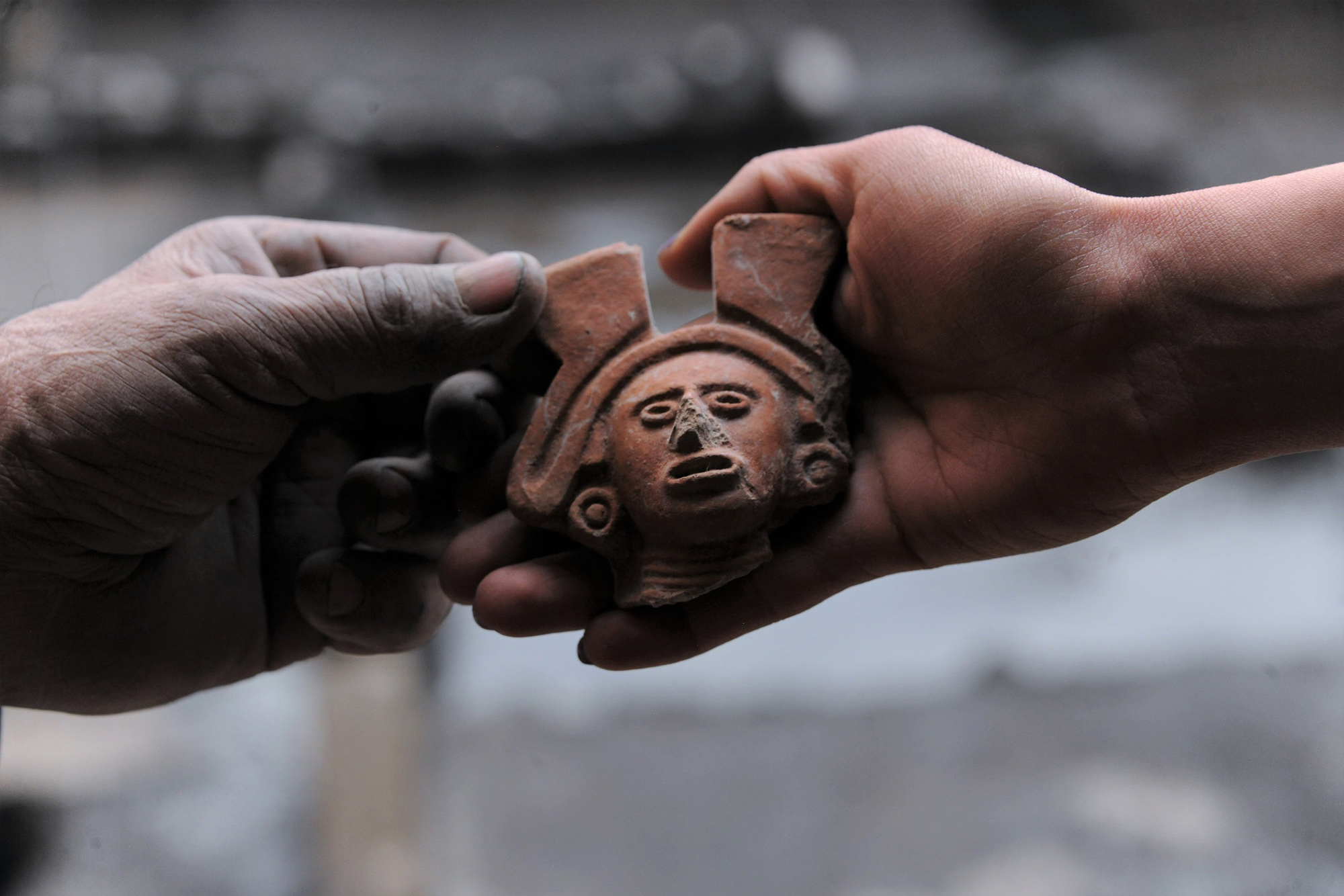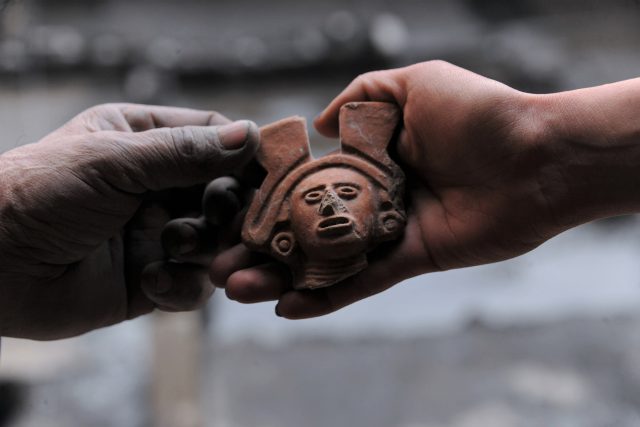
Archeologists in Mexico have unearthed an altar complete with a pot containing human remains that they say was part of a ritual to mark the fading world of the indigenous Mexica after Spanish conquest.
The discovery took place near what is now Garibaldi Plaza in Mexico City. Between 1521 and 1610, which is when the altar and pot are believed to have been made, the city was called Tenochtitlan.
A team of experts from the National Institute of Anthropology and History confirmed that the location of the discovery was once the home of a Mexica family.


“In honor of this fading world, the inhabitants of an ancient home performed a ritual in the 16th century, possibly between A.D. 1521 and 1610, to testify that this was the end of a cycle of their lives and of their civilization,” the Mexican Ministry of Culture said in a statement.
“Between songs and the smell of copal, the residents arranged on the patio an offering with multiple elements, among which were a pot with bone remains (human ashes) and 13 polychrome incense burners of almost one meter [about 3 feet] in length, used to burn the resin.”


Copal is a tree resin that was used by pre-Columbian Mesoamerican people as an incense in rituals and ceremonies.
For Mara Abigail Becerra Amezcua, coordinator of the archeological finds, the discovery is significant within the context of the “500 years of indigenous resistance” proclaimed in the country this year, on the occasion of the 500th anniversary of the Spanish conquest.
The year 1521 marked the fall of Tenochtitlan, the capital of the Aztec empire, a decisive victory for the Spanish that marked the downfall of the Aztecs.


Mara Becerra said that this discovery is significant because this offering, located at a depth of about 13 feet, was covered with several layers of well-consolidated adobe to keep it from prying eyes. She said this shows the mettle of those Mexica who remained in Tenochtitlan after the city was taken by Spanish conquistador Hernán Cortés.
The foundations of the Mexica housing complex were found in the middle part of a modern property. For Mara Becerra, the “most striking discovery within this complex is the offering under the floor of the interior patio,” confirming the “sacred character” of the location. After being a significant spiritual space for the native Mexica people and home to a temple, it went on to become the Santa Maria La Redonda neighborhood and home to a Christian church.
“The set of 13 incense burners expresses a particular symbolism, since they were arranged on two levels and in two different orientations: some in an east-west direction, and others in a north-south direction, as an evocation of the 20 thirteen that made up the tonalpohualli, the 260-day Mexican ritual calendar,” Mara Becerra said. “Likewise, it is worth mentioning that the number 13 alluded to the levels of the sky.”
Edited by Richard Pretorius and Kristen Butler
The post Potted History: Conquered Mexicans Buried Pot Of Human Ashes To Mourn End Of Their Civilization appeared first on Zenger News.




